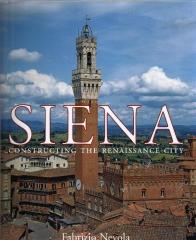Siena, one of the major artistic centres of medieval and Renaissance Italy, is renowned for its striking architecture and its beauty as a city. This book is the first to focus on Sienese architectural and urban history during the fifteenth and early sixteenth centuries. Fabrizio Nevola offers a comprehensive picture of the city, describing in detail how the layout and appearance of Siena changed between 1400 and 1520, as political and social events triggered a variety of initiatives that transformed the city's urban core. Weaving together social, political, economic and architectural history, the book explores the role of key patrons in Siena's urban projects, including Pope Pius II Piccolomini and his family and, later, the quasi-despot Pandolfo Petrucci 'The Magnificent'. Nevola also considers how the government used architecture to forge a local identity and establish authority, the influence of important architects and architectural theorists, and the way that ritual events contributed in special ways to the changing face of the city. Enhanced with a beautiful collection of historic and new photographs, the book offers a fresh and engaging account of Siena's unique architectural achievements.

(0 Comentarios)